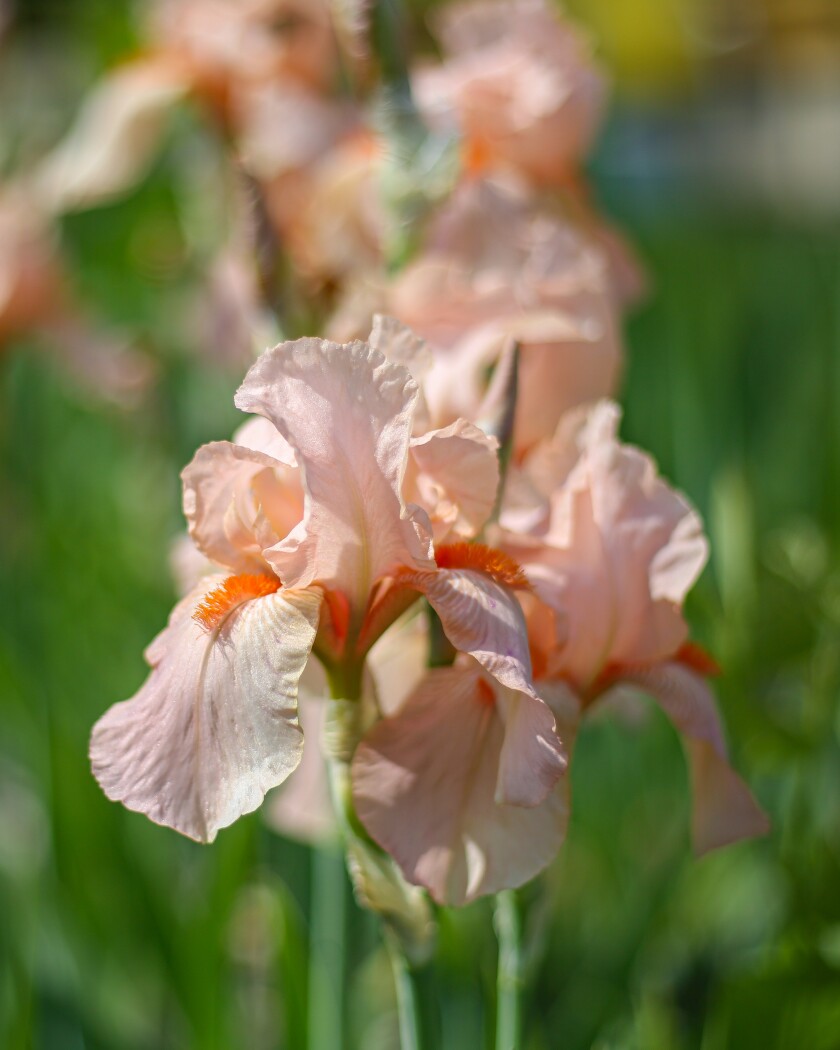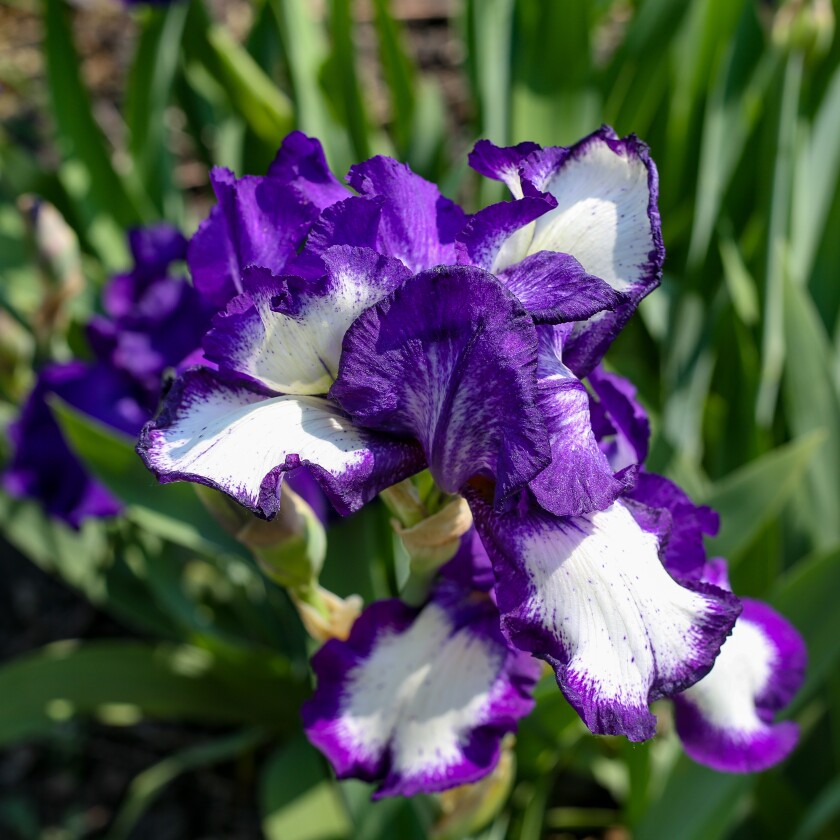Why did the gardener bury a $100 bill beneath each new perennial? The tag said they needed rich soil.
Dollar bills might add a little organic matter as they decompose, but it’s not necessary to bury money to promote early summer color in flowerbeds and landscapes. We can simply plant perennials that bloom profusely in June.
Annual flowers in pots and planters on decks and patios will soon be loaded with color as they grow larger, cascade with blossoms, and reach peak perfection by mid-summer.
Until the annuals gain full speed, early summer can lack color. But if we plan properly, June-blooming perennials can bridge the color gap, making this month one of the most colorful of the summer season.
A favorite perennial of ours that begins flowering in late May and extends well past mid-June is perennial salvia, with its deep blue or bluish-purple spike-shaped flowers. Several years ago, we planted masses of Blue By You Salvia, a recent All-America Selections perennial winner.

Blue By You has stronger stems than some older varieties, making it less prone to flopping apart. Its flower spikes are held sturdily above clean foliage, reaching a height of around 20 inches.
Blue By You has proven winter-hardy, even during the past test winter, whose lack of insulating snow caused death or damage to many established perennials.
Blue By You will bloom again in mid-to-late July if, after the June flower spikes are faded and dry, the spikes are sheared off right above the foliage. Even when not in bloom, the deep green plants are attractive.

Even when iris are finished blooming the sword-shaped leaves add interest to landscapes and flower beds.
Chris Flynn / The Forum
Blue By You is available at garden centers as potted plants, but if it’s sold out for this season, you can add it to your wish list for next spring. Besides Blue By You, other beautiful perennial salvia cultivars are also on the market.
Next on the list of reliable June-blooming perennials is the timeless iris. Dwarf iris types bloom in May or early June, while the tall bearded iris, also known as German iris, come into full glory in June.
Named after the goddess of the rainbow, iris are available in more colors than perhaps any other perennial flower, with every color of the rainbow, even black and white.
Some iris cultivars are termed “rebloomers,” meaning they occasionally will bloom again in September. One of the most common rebloomers is the cultivar Immortality, a beautiful white. Although the repeat bloom isn’t a sure thing, it happens quite regularly and seems to be weather-dependent.
When iris are done blooming, groom the plants by removing the spent flower stalks. Even when iris are not in blossom, the bluish-green, sword-shaped leaves are attractive in flower gardens and landscapes.

Tall German iris flower reliably in June.
Chris Flynn / The Forum
The most pleasing perennial gardens and landscapes are created by combining a mixture of flower times, shapes and colors. Iris are dependable perennials for Northern gardens and help fill the need for color in June.
No mention of June-blooming perennials would be complete without the venerable peony. A staple in pioneer flower plantings, peonies can remain in place for more than a century.
Peonies bloom sometime between late May and mid-June, depending on the weather and the location in which peonies are planted. If located in the warmth along the south sides of buildings, peonies bloom earlier.
Although September is the traditionally successful date to dig, divide or move an established peony, garden centers offer potted peonies, which can be planted all summer.
Peonies, like iris, are beautiful even when not in bloom. The deep green, waxy leaves on strong stems create a shrub-like appearance, adding landscape interest.
To enhance the after-bloom beauty, remove spent flowers as they fade, cutting the blossoms’ stems just below the foliage level.
Powdery mildew fungus can cause foliage to be unsightly, creating a gray coating on leaves. Prevent the disease while the foliage is still healthy by applying a garden fungicide that list powdery mildew and peony on the label.

